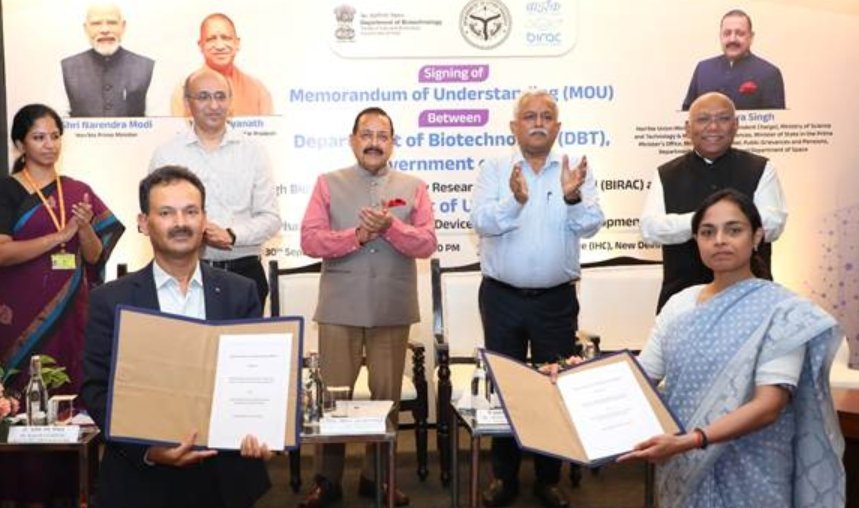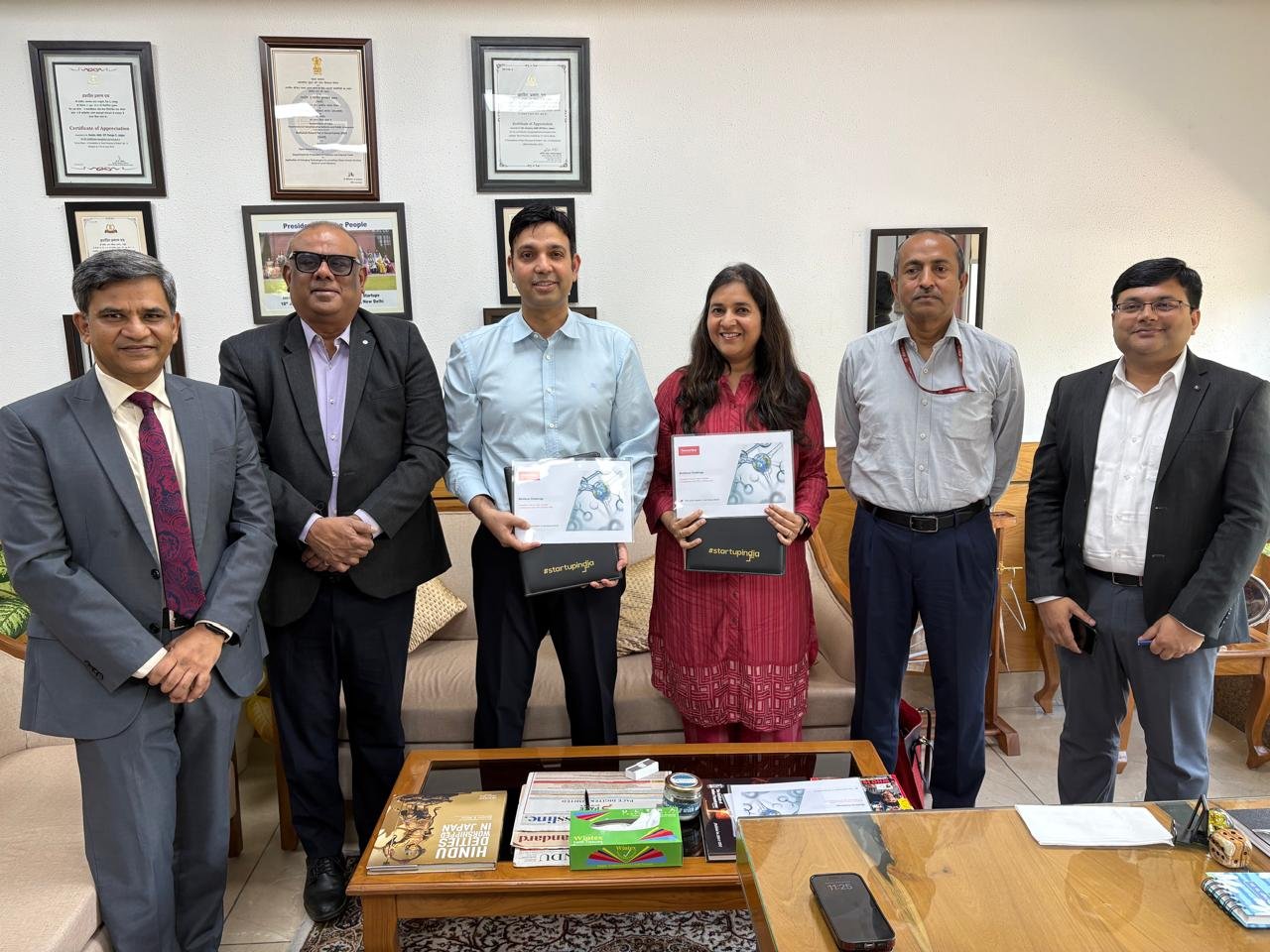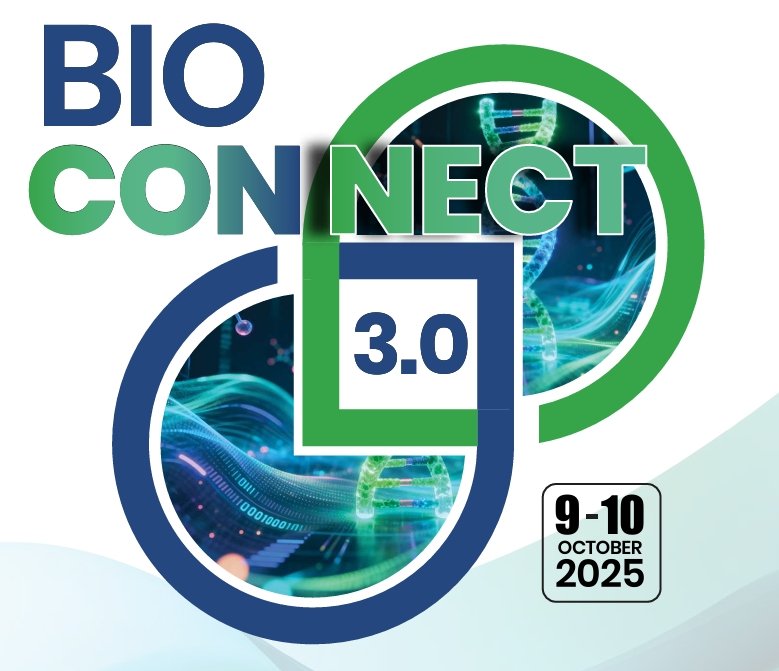Biotechnology education in India: concerns and challenges
August 05, 2009 | Wednesday | News
Biotechnology
education in India: concerns and challenges
Biotech sector is
knowledge intensive and requires highly skilled manpower.
There is an urgent need
to attract bright students to create and sustain a world-class human
capital in biotechnology.

Dr Suman Govil and Shubhlata Sharma
Department of Biotechnology, Ministry of Science and Technology, New
Delhi
Biotechnology has tremendous potential
in improving human and animal health, increasing agricultural
productivity and providing safe and clean environment. Realizing the
urgent need to create high quality workforce, the department of
biotechnology initiated an integrated program for human resource
development comprising of post-graduate teaching, doctoral and
post-doctoral fellowships, training of post-graduate students in
industry as well as re-training of existing faculty and scientists in
leading national and overseas laboratories.
The department took a conscious decision not to start undergraduate
teaching in biotechnology as it is highly specialized and
laboratory intensive course. It is difficult to attract faculty with
relevant expertise in undergraduate colleges due to lack of research
environment and proper laboratory facilities for hands-on training. It
is difficult to provide fundamentals of basic science in specialized
courses at undergraduate level and future career options available to
students are also limited. The same sentiment has been recently echoed
by Top-3 science academies of the country requesting HRD minister to
wind-up all specialization courses currently offered at the school and
undergraduate level. DBT initiated MSc courses in
biotechnology in 1985 in six universities in
consultation with other educational and research ministries.
This was first such attempt in the country which was greatly welcomed
by academia and industry alike. These programs were conceived as
collaborative, inter-departmental and inter-institutional
programs and initiated on the basis of
core strength of faculty, existing infrastructural facilities,
R&D grants received on competitive funding
basis, nearby institutions engaged in biotechnology
R&D. Initiation of these teaching programs in biotechnology
improved quality teaching in biotechnology as well as allied life
science fields due to improvement of laboratory infrastructure and
bringing in new expertise.
However, setting up of separate biotech departments subsequently by
universities at times, alienated other participating departments.
Perhaps, setting up of a school comprising of different departments
could have been a better alternative. The department provided
liberal grants for establishment of specialized laboratory
infrastructure, recurring grants for consumables, studentship, books
and journals, travelling, visiting faculty and contingency.
Keeping in mind, the demand for trained manpower in specific
areas and regional aspirations, these
programs have been expanded in over 70 universities
in general and specialized courses in biotechnology.
Simultaneous uncontrolled expansion of courses by various
private and public sector institutions without proper assessment of
manpower requirement, available laboratory infrastructure,
experienced faculty and sufficient consumable grant, has severely
affected the quality of training imparted and damaged credibility of
biotech courses in general.
Although there are no authentic estimates of the number of institutes
conferring biotechnology education, there are varying reports.
According to a report in The Hindu in 2004, 104 colleges (36 in Tamil
Nadu alone) offer biotechnology at BE/BTech level. Survey conducted by
IIM, Bangalore, in 2007 reports an output of 10,000 students per year
at UG, PG and doctoral levels from 250 colleges with predicted annual
growth rate of 20 percent. Education and Career Resource Guide brought
out by BioSpectrum in 2009 lists 49 BTech courses, 108 PG
(MSc/MTech/MPhil), 50 PG/PhD, 140 BPharm/MPharm courses. Geographical
analysis of these institutes shows that Tamil Nadu
tops the list with largest number of educational institutions offering
biotech courses, followed by Karnataka , Maharashtra, Andhra Pradesh,
UP, Delhi and Kerala.
Quality of students passing out of universities depends on a number of
factors viz., selection of bright students with right aptitude,
committed faculty with relevant expertise, upgradation of faculty,
creation of laboratory infrastructure, updated curricula and enough
hands-on training. Selection of students for DBT supported
programs is made through common entrance test conducted by JNU at over
70 centers all over the country and only one out of 70 applicants is
selected. Selection is based on multiple choice-based questions due to
difficulties in evaluation of subjective question papers for logistic
reasons. However, commercial interests of institutions running courses
in self-financing mode leads to admission of second rated students. As
against the number of students restricted to 10-15 per year in DBT
supported programs, some of the universities admit as many as 150
students further affecting quality of practical training imparted. Some
of the decisions to admit huge number of candidates appear to be guided
by commercial reasons as these institutes charge substantial sums of
money to the tune of Rs 1-2 lakh per annum.
In the DBT supported teaching programs, emphasis has been laid to
appointment of 4-6 core faculty positions with relevant qualifications
and expertise as well as provision for inviting visiting faculty in gap
areas. Enough attention is also paid to upgradation of skills of
faculty by organizing training in leading national and international
laboratories. Appointment of contractual faculty with low remuneration
without proper educational background and experience by universities
running courses in self financing mode is a major constraint in
conferring quality education. Some of these programs are run
with skeletal faculty who cannot be spared for faculty improvement
programs further affecting the quality of teaching.
The department of biotechnology ensures that model course
curricula are developed periodically through a consultative process to
maintain uniformity and to lay emphasis on practical training. New
courses on intellectual property rights, regulatory issues,
communication skills and recent developments have been introduced to
address the concerns of industry. Some of the universities continue to
teach outdated curricula due to lack of expertise and facilities.
The department is providing consumable grant and thesis grant on per
student basis to ensure good practical training and has made it
mandatory to conduct in-house project work. Some of the institutes
conduct practicals in groups of 4-6 students and a large number of
practicals are only demonstrated which severely affects their
employability. Dr Lakhotia has addressed and condemned the decision of
universities to compel students to take up project work in other
institutes. This mandatory requirement of project work has
led to mushrooming of private training institutes putting double
financial burden on helpless students.
Opportunities for biotechnology students exist in agri-based
industries, pharma industries, clinical research
organizations, bioinformatics industry in
R&D, production and manufacturing, quality
control and analysis (QA/QC), technology transfer and
management, knowledge-based marketing, consultancy
organizations for preparation of techno-economic feasibility
reports, regulatory affairs, patent attorneys and examiners.
The CEOs and HR executives of biotech companies interviewed by IIM,
Bangalore revealed that employability of biotech students varies from
25-50 percent. IIM, Bangalore survey clearly brings out that intended
supply of manpower is higher than the incremental demand for manpower
per year. The problem is further aggravated by gap in demand and
supply, employability of manpower and mismatch in availability of jobs
and preference of students. Attention should be focused on quality
education.
Although jobs for marketing are 20
times more in number as well as monetarily rewarding, biotech
students opt for marketing as their last choice. An analysis of job
preference by industrial trainees by Auroprobe Laboratories shows 58
students opted for R&D as first preference, 22 opted for
quality control and analysis and only 14 opted for operations. All
students opted for marketing as last choice. This does not augur well
as there is a mismatch between job availability and preference of
students.
Analysis of first placement of MSc students passing out of DBT
supported programs shows 50 percent students opt for higher studies in
India and 15 percent opt for PhD in overseas laboratories. Only 15-20
percent MSc students and 45-50 percent MTech students opt for jobs in
industry. One possible reason for few students opting for jobs in
industry could be low remuneration, non fulfillment of high
expectations, routine jobs and stagnation in career graph. To attract
students for taking up jobs in industry and to bridge the skill gaps,
the department is providing industrial exposure to biotech postgraduate
students for period of six months in industry.
Biotech sector is knowledge intensive and requires highly skilled
manpower. There is an urgent need to attract bright students, provide
quality training, retain talent, retrain existing people and reverse
brain drain by providing re-entry packages to
create and sustain a world-class human capital in biotechnology.
Holistic education with judicious balance of basic fundamentals as well
as latest developments need to be imparted. Undue rush to introduce
biotechnology courses without proper infrastructure, expertise and
research environment needs to be curbed. Efforts should be made to make
education relevant to the needs of biotech industry. The industry
should review remuneration packages offered to fresh entrants
like the revision of fellowships by various government
agencies.










